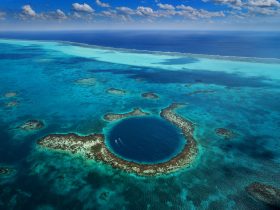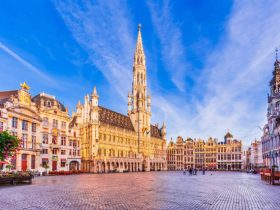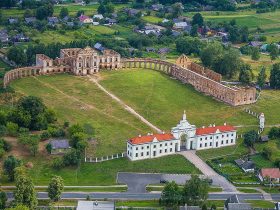Montevideo, the vibrant capital of Uruguay, offers a unique blend of colonial charm, cultural richness, and modern sophistication. Nestled along the northeastern bank of the Río de la Plata, this coastal city boasts historic neighborhoods, scenic promenades, and a lively arts scene. Whether you’re a history enthusiast, a foodie, or a beach lover, Montevideo has something to captivate every traveler.
📊 Key Facts About Montevideo
| Attribute | Details |
|---|---|
| Official Language | Spanish |
| Population | Approximately 1.3 million (2023) |
| Area | 201 km² |
| Country | Uruguay |
| Continent | South America |
| Local Time | UTC -3 |
| Currency | Uruguayan Peso (UYU) |
| Plug Type | Type C and F (European standard) |
| Average Annual Temperature | 17°C (63°F) |
| Climate | Temperate with mild winters and warm summers |
| Vegetation | Grasslands and coastal flora |
| Main Economic Activities | Commerce, services, tourism, and port activities |
| Country Code | +598 |
| City Phone Code | 2 |
🏛️ Top Tourist Attractions
- Ciudad Vieja (Old City): Explore colonial architecture, art galleries, and vibrant street life.
- Plaza Independencia: The city’s main square, featuring the Solís Theatre and the iconic Palacio Salvo.
- Rambla of Montevideo: A scenic coastal promenade perfect for walking, cycling, and enjoying beach views.
- Parque Rodó: A popular park with a lake, amusement park, and cultural venues.
- Mercado del Puerto: A bustling market known for traditional Uruguayan barbecue and local crafts.
- Fortaleza del Cerro: A historic fortress offering panoramic views of the city and harbor.
- Palacio Legislativo: The seat of Uruguay’s parliament, renowned for its impressive architecture.
✈️ How to Get to Montevideo
Montevideo is accessible via various modes of transportation:
- By Air: Carrasco International Airport (MVD) connects Montevideo with major cities worldwide.
- By Sea: Ferry services operate between Montevideo and Buenos Aires, Argentina.
- By Land: Long-distance buses link Montevideo with other Uruguayan cities and neighboring countries.
🚍 Transportation Tips
- Public Buses: An extensive network covers the city; tickets can be purchased onboard.
- Taxis: Readily available and metered; ensure the meter is running to avoid overcharging.
- Ride-Sharing: Apps like Uber operate in Montevideo, offering convenient alternatives to taxis.
- Walking and Cycling: The city’s flat terrain and dedicated paths make it pedestrian and cyclist-friendly.
🏨 Accommodation Options
Montevideo offers a range of accommodations to suit various budgets:
- Budget: Hostels and guesthouses starting from $20 per night.
- Mid-Range: Hotels offering comfortable amenities from $60 per night.
- Luxury: High-end hotels and boutique accommodations starting from $120 per night.
🍽️ Culinary Delights
Experience Montevideo’s rich culinary scene:
- Asado: Traditional Uruguayan barbecue, often enjoyed at local parrillas (steakhouses).
- Chivito: A hearty sandwich featuring beef, ham, cheese, and various toppings.
- Empanadas: Pastries filled with meat, cheese, or vegetables.
- Mate: A traditional herbal tea, commonly shared among locals.
☕ Cafés and Restaurants
- Café Brasilero: One of the city’s oldest cafés, offering a nostalgic ambiance.
- Jacinto: A contemporary restaurant known for its innovative cuisine.
- La Pulpería: A cozy spot specializing in grilled meats and local dishes.
📜 Historical Overview
Founded in 1726 by the Spanish, Montevideo has evolved from a colonial port to Uruguay’s political, cultural, and economic center. The city’s rich history is reflected in its architecture, museums, and vibrant traditions.
🏘️ Districts and Neighborhoods
Montevideo is divided into several barrios (neighborhoods), each with its unique character:
- Ciudad Vieja: The historic heart of the city.
- Pocitos: A coastal neighborhood known for its beach and nightlife.
- Carrasco: An upscale area featuring elegant homes and a tranquil atmosphere.
- Parque Rodó: A cultural hub with parks, museums, and theaters.
🌄 Geographical Highlights
- Río de la Plata: The estuary along which Montevideo is situated.
- Beaches: Including Playa Ramírez, Playa Pocitos, and Playa Malvín.
- Cerro de Montevideo: A hill offering panoramic views and home to the Fortaleza del Cerro.
🎭 Notable Personalities
- Mario Benedetti: Renowned writer and poet.
- Eduardo Galeano: Influential journalist and author.
- Jorge Drexler: Oscar-winning musician and singer-songwriter.
🌐 Neighboring Cities and Countries
- Buenos Aires, Argentina: Accessible via ferry across the Río de la Plata.
- Punta del Este: A popular beach resort city east of Montevideo.
- Colonia del Sacramento: A historic town west of the capital.
💡 Insider Tips
- Currency Exchange: Use official exchange houses (casas de cambio) for better rates.
- Safety: Montevideo is generally safe, but remain vigilant in crowded areas.
- Language: While Spanish is predominant, English is understood in tourist areas.
- Local Etiquette: Sharing mate is a common social practice; accept if offered.
❓ Frequently Asked Questions
- What is the best time to visit Montevideo? Spring (September to November) and autumn (March to May) offer pleasant weather and fewer tourists.
- Is Montevideo expensive for travelers? It offers a range of options to suit various budgets, from affordable hostels to luxury hotels.
- Can I use credit cards in Montevideo? Yes, credit cards are widely accepted, but it’s advisable to carry some cash for smaller establishments.
- Is tap water safe to drink? Yes, tap water in Montevideo is generally safe for consumption.
- Do I need a visa to visit Uruguay? Visa requirements vary by country; check with your local Uruguayan embassy or consulate.
- What is the tipping etiquette? Tipping around 10% is customary in restaurants if service is not included.
- Are there any local festivals? Montevideo hosts various festivals, including the vibrant Carnival in February.
- Is public transportation reliable? Yes, the city has an extensive and efficient bus network.







Leave a Review